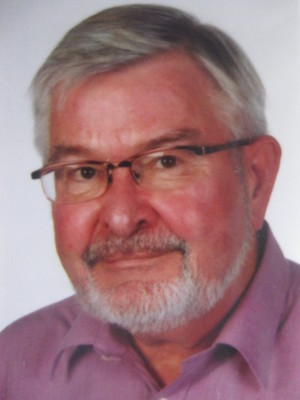26/05/2015, 14:00 — 15:00 — Room 6.2.38, Faculty of Sciences of the Universidade de Lisboa
Catarina Carvalho, Instituto Superior Técnico
Index formula on compactified domains and perturbed Dirac operators
We consider the Fredholm index problem on open domains in $\mathbb{R}^n$ with a compactification to a domain with boundary, for a class of pseudodifferential operators suitably generated by an algebra of vector fields tangent to the boundary. This class falls in the framework of pseudodifferential calculi on so-called Lie manifolds, defined by Ammann, Lauter, Nistor, building on work by Melrose. Examples are, e.g., domains with cylindrical ends, or asymptotically Euclidean.
We present an index formula in case the generating vector fields vanish at infinity, that is, at the boundary. There exists a commutative full symbol, defining an invertible function on a $2n-1$-sphere and the index depends only on a topological invariant associated to this function, e.g., if $n=1$, we have the winding number.
As an application, we study the index of Dirac operators coupled with an unbounded potential on an even dimensional domain. We reduce to the computation of the index of a perturbed Dirac operator on a commutative domain, now with a bounded potential, and we obtain a Callias-type index formula in these two cases.
05/05/2015, 14:00 — 15:00 — Room P3.10, Mathematics Building
Raquel Coelho Simões, CEAFEL, Universidade de Lisboa
Representation theory of quivers and its combinatorics
In this talk I will give a brief introduction to representation theory of quivers, going through the notions of the category of representations of quivers, corresponding derived category and some of its orbit categories, such as cluster categories. I will discuss some important questions in this area and give examples to show how combinatorics play a useful role in tackling these representation-theoretic problems.
See also
CEAFELseminar5.2015.pdf
28/04/2015, 14:00 — 15:00 — Room P3.10, Mathematics Building
Sónia Carvalho, ISEL-IPL
Generalized matrix functions: derivatives and norms
In recent papers we have already obtained formulas for directional derivatives, of all orders, of the immanant and of the $m$-th $\xi$-symmetric tensor power of an operator and a matrix, when $\xi$ is an irreducible character of the full symmetric group. The operator bound norm of these derivatives was also calculated. In this seminar it will be presented similar results that have been established for generalized matrix functions and for every symmetric tensor power associated with the same character.
See also
seminario_CEAFEL.pdf
 31/03/2015, 14:00 — 15:00 — Room 6.2.38, Faculty of Sciences of the Universidade de Lisboa
31/03/2015, 14:00 — 15:00 — Room 6.2.38, Faculty of Sciences of the Universidade de Lisboa
Frank Speck, CEAFEL, Universidade de Lisboa
Operator factorization and boundary value problems
Boundary value problems in Mathematical Physics are often proved to be Fredholm or even well-posed, sometimes explicitly solvable by formulas in closed analytical form. Many of these conclusions can be formulated in terms of operator factorization methods (in Banach spaces as central case). We explain various principles and their realization in terms of applications. The advantages are
- very clear and compact formulations, e.g., of “equivalent reduction” of operators associated to boundary value problems to “more convenient operators” (like boundary pseudodifferential operators)
- explicit inversion by operator factorization methods,
- some related conceptions such as reduction to semi-homogeneous problems, normalization and others. Several examples underline the ease and usefulness of operator factorization.
The talk is based upon joint work with E. Meister, R. Duduchava, F. S. Teixeira, L. P. Castro and A. Moura Santos.
See also
TalkUL150331.pdf
 18/03/2015, 11:30 — 12:30 — Room CP3.18, Teaching Complex at the Universidade do Algarve, Gambelas Campus
18/03/2015, 11:30 — 12:30 — Room CP3.18, Teaching Complex at the Universidade do Algarve, Gambelas Campus
Sergej Rjasanow, Universitaet des Saarlandes
Numerical approximation of boundary integral operators
We discuss efficient numerical methods for the boundary integral formulation of various three dimensional boundary value problems for the Laplace equation, Helmholtz equation and for the system of Lamé equations. The corresponding boundary integral equations will be discretised using Galerkin method leading to a system of linear equations with a dense matrix $A$ of some dimension $N$. A naive strategy for the solution of the corresponding linear systems would need at least $O(N^2)$ arithmetical operations and memory. Methods such as fast multipole are based on explicitly given kernel approximations by degenerate kernels. In contrast to the methods mentioned, the Adaptive Cross Approximation method (ACA) generates a hierarchical low-rank approximation from the matrix itself using only few entries and without using any explicit a priori known degenerate kernel approximation. The efficiency and convergence properties of the numerical method will be illustrated for a number of different boundary value problems and for different surfaces.
 13/03/2015, 14:30 — 15:30 — Room P3.10, Mathematics Building
13/03/2015, 14:30 — 15:30 — Room P3.10, Mathematics Building
Sergej Rjasanow, Universitaet des Saarlandes
Numerical approximation of boundary integral operators
We discuss efficient numerical methods for the boundary integral formulation of various three dimensional boundary value problems for the Laplace equation, Helmholtz equation and for the system of Lamé equations. The corresponding boundary integral equations will be discretised using Galerkin method leading to a system of linear equations with a dense matrix $A$ of some dimension $N$. A naive strategy for the solution of the corresponding linear systems would need at least $O(N^2)$ arithmetical operations and memory. Methods such as fast multipole are based on explicitly given kernel approximations by degenerate kernels. In contrast to the methods mentioned, the Adaptive Cross Approximation method (ACA) generates a hierarchical low-rank approximation from the matrix itself using only few entries and without using any explicit a priori known degenerate kernel approximation. The efficiency and convergence properties of the numerical method will be illustrated for a number of different boundary value problems and for different surfaces.


